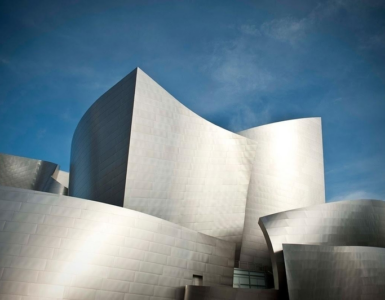Sam Sherman is an independent producer and distributor of drive-in films from the ‘60s to the ’80s. His life is a colorful, fascinating story about the history of the exploitation genre.
Independent-International Pictures, the company he founded with the late director Al Adamson, offered product in all the most outré genres: horror, biker, crime action and softcore. This included such memorable titles as Satan’s Sadists, Blazing Stewardesses, Hell’s Bloody Devils and the company’s most iconic film, Dracula Vs. Frankenstein.
Now that Sherman is preparing to go back to the drive-in with select titles from the I-I library, he generously took the time to give ArtsBeat LA an exclusive interview about how it all began — and how it came to a shocking end. Here is what he said:
The beginnings
I started out being a fan of anything weird or strange, like comic books and radio programs like “The Shadow” and “I Love a Mystery.” My first horror movie was Abbott and Costello Meet Frankenstein. That introduced me the Frankenstein Monster, Lugosi as Dracula and the Wolfman — and that really captivated me.
I’d also been interested in still photography since I was a small kid, and eventually I got an 8mm movie camera that my father gave me, and I started making little 8mm films. I got a projector, and I started collecting films too.
When television came in, the films that were shown were mainly older films — a lot of mystery and horror. Also westerns. I’m a great fan of westerns.
So I decided I would make this my life’s work. How I would do that? I had no idea…to go from being a fan to having a career.
I used to receive a subscription to Popular Photography, which I don’t think exists anymore. It was a big national magazine and it told about a university program that would train filmmakers at City College of New York. I was a technical high school student in New York at the time.
I’d always taken a still camera and a movie camera with me, and I’d always be photographing all sorts of strange sights. This was an opportunity to go to a film school and learn something. I’d been largely self-taught through reading books and magazines and my own experiments.
At the same time I was going to the film school, I also had a number of jobs. I started working as a projectionist in the audio-visual department. From there, I took a job with an outside company, learning how to repair negatives and film. And from there, I got a job as an assistant film editor. I was always editing something. Editing was the key to making motion pictures. Everything is a mosaic of what you’re putting together. It creates an effect.
Famous Monsters
And while I was doing that, I was doing my own projects. I had my own little company that I called Signature Films. I picked up the first issue of Famous Monsters of Filmland and wrote to Jim Warren, the publisher. I had collected stills from horror films, and I was available to rent them to him. He was impressed by that, because he needed horror stills. I also asked if I could write articles, and he said, “Of course.” I started ghost-writing articles for Forry Ackerman.
When I was going to school, I developed a friendship with a guy named Norman Michaels. He was a fellow horror aficionado and collector, and he ended up starring in a movie I made at college. It was kind of a horror satire called The Weird Stranger.
Many years later, I went back to City College and they said, “Now we’re going to run (at a screening) the most popular film in the Film Institute.” I wondered what it was and on came The Weird Stranger! Norman and I continued to work together. In October of 1958, we did a program that I consider my first commercial exhibition. We rented a theater on Halloween and we did a midnight show with two Bela Lugosi films.
These were features that were edited down from a 1934 serial, The Return of Chandu. We had a sold-out crowd. We did our own exploitation. There were articles we got free, and then we took little ads in the newspaper. The job of marketing we did was quite good, and it taught me a lot.
From there, I was still working with Jim Warren, but my larger career wasn’t going anyplace. My parents gave me money to go to California, so I went to Hollywood at the age of 22, and met a lot of people including the silent film director Denver Dixon (Victor Adamson).
The convergence
At that time, New York was the big business hub for film. L.A. was the manufacturing hub for the studios. But distribution, marketing, international…everything was out of New York. Major studios all had their main branches in New York City and I had a lot of contacts.
Denver drove out cross-country and from then on, I was working with Denver Dixon. I had bought the rights and the negative to the 1934 film The Scarlet Letter, and he was interested in working with me on my first theatrical distribution.
Eventually Al decided to make a picture called Echo of Terror, and Denver said “Don’t run it for anyone out there [in Hollywood].” He didn’t trust them! Al drove cross-country to join us, and we screened it. I said, “Al, you’re really an excellent director.” I thought it was very good, but was it marketable? We went through a long period trying to market it, and nobody wanted it. We revised it into Psycho A Go-Go, which is as close as you get to seeing the original. Still, nobody wanted it.
So we revised it to The Electronic Brain, with me doing rewrites and adding [actor] John Carradine. Still nothing. But years later, through my friend David Sehring, who was with AMC Networks, I got with David Gregory, the head of Severin Films, who wanted to do a documentary about Al called Blood & Flesh: The Reel Life and Ghastly Death of Al Adamson. It eventually led to him licensing everything that Al worked on, and David’s putting out a mammoth box set. He said it’s already sold out and they have to reprint. I was very happy with that.
Independent-International is born
Getting back to where we were, we found that with our inability to market that film in any means successfully, we couldn’t go to distributors and explain what we were trying to do. In those same years, I was also working for Hemisphere Pictures. They filmed in the Philippines and distributed worldwide. I encouraged them to go into horror pictures rather than the war pictures, and I did all their marketing. I was always trying to find a way to blend Al, myself and Hemisphere into one thing.
It was never quite working, but I was still involved with Al and Denver. Eventually, after trying for many years, we were able to raise money through a friend of mine by the name of Dan Kennis, who had been a partner involved with Hemisphere. He knew about exploitation and drive-in films, and he ended up putting together the financing that started Independent-International Pictures Corp. It was an idea of mine to have a name similar to American International so that people would think there was some similarity.
So Al and I started this company with Dan Kennis. We had several unreleased films that had all failed, but you didn’t want to try to start a company with a failure. You wanted something fresh and new, not something that had been kicking around for a number of years as a failure.
Al came up with a story — very exploitable — Satan’s Sadists. It started the company off very successfully. And then we decided to make another picture which was called Blood Freaks. It was a very strong title, so we decided we’d have a cover title to not let the real title be known to people, and that was Blood Seekers.
I worked on it from the very beginning. I put together the financing, wrote the story, worked on the casting. Al made up his mind he wanted to start shooting on a certain date. The thing was not ready and we had many problems with it. When it was shot, it didn’t look good.
Dan Kennis and some other guys saw it and they hated it, saying “Shelve it. Throw it away,” but I didn’t want to do that — throw anything away. Being an editor, I could always see how you could recut and reshoot something. So that became Dracula vs. Frankenstein, our most famous film.
In Part Two, Sam gave us more behind-the-scenes details about the making of Dracula Vs. Frankenstein and other Independent-International films. Read Part Two here.
(NOTE: This interview has been ever-so-slightly edited for length and clarity. As an editor, we’re sure Sam will appreciate that.)







